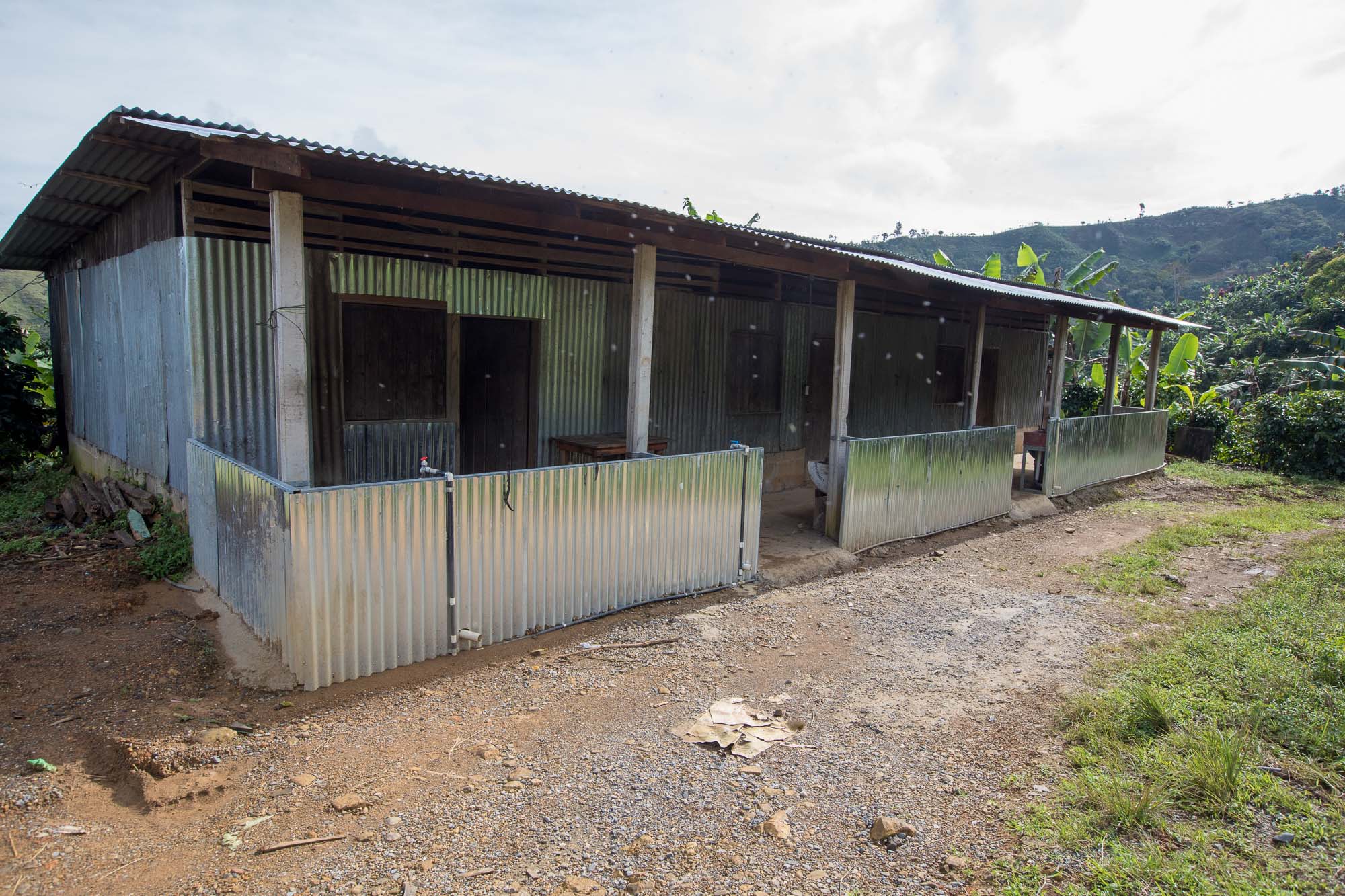This is a list of terms related to the production and commercialization of coffee and their respective definitions.
Cafeto
Coffee plant.
Cafetal
Land planted with coffee plants for the production and harvest of coffee.
Bandola
Branch of the coffee plant.
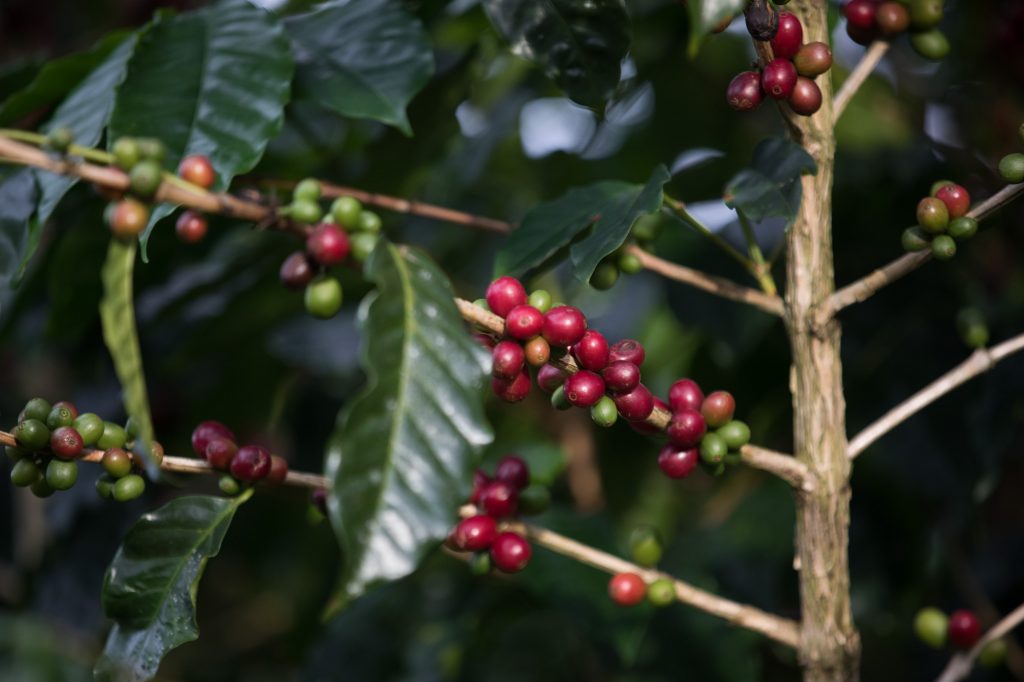
Monica Quesada Cordero/El Colectivo 506/National Geographic Society Covid-19 Emergency Fund
Coffee cherry
Fruit of the coffee plant in the bandola or freshly collected from the plant. A coffee cherry has two coffee beans inside, covered in several layers.
Ripe coffee cherry
The coffee cherry is already red (or yellow in some varieties) because it is ripe fruit.
Pintón (spotted) coffee cherry
The coffee cherry that has not finished ripening. It has yellow, orange, and red spots.
Green coffee cherry
Coffee cherry that has not ripened and is still green.

Rip, Pintón or spotted and Green coffee cherry. Monica Quesada Cordero/El Colectivo 506/National Geographic Society Covid-19 Emergency Fund
Green parchment coffee
Coffee beans that are dry but still have the parchment, which corresponds to the endocarp of the coffee cherry—that is, the innermost layer of the fruit that surrounds the seed.
Gold coffee
Dry coffee beans, without the parchment.
Ruptured coffee
Ripe or pintón coffee cherries that have opened due to a lot of rain.
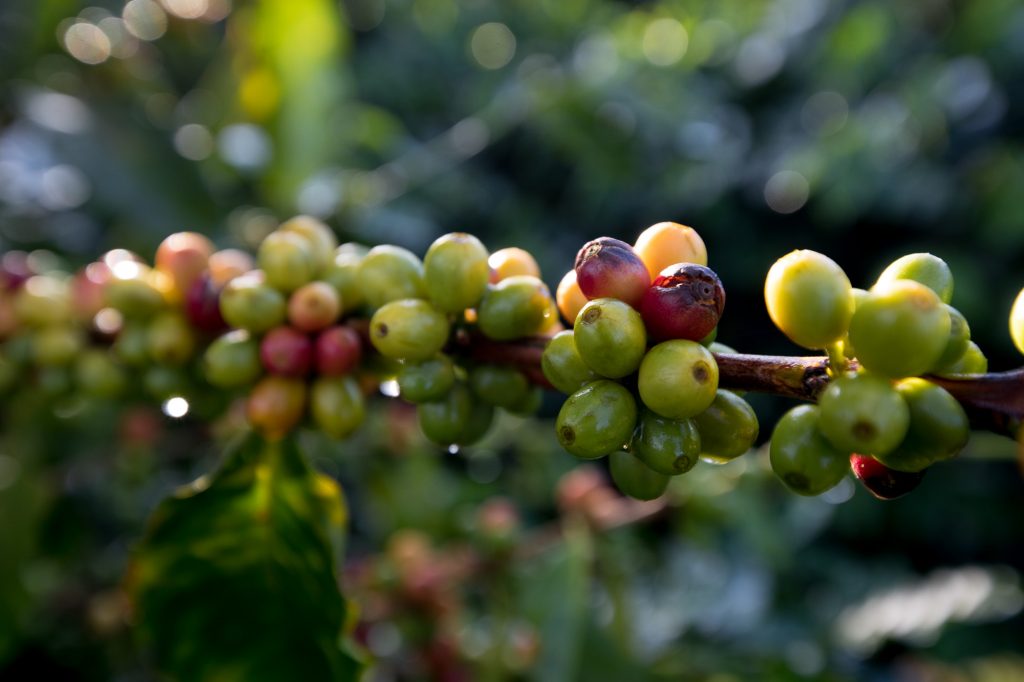
Monica Quesada Cordero/El Colectivo 506/National Geographic Society Covid-19 Emergency Fund
Arabica species Caturra variety
In Costa Rica, by law, only Arabica coffee can be cultivated. This is considered internationally to be the finest quality coffee. The Caturra variety is a smaller plant and very susceptible to diseases such as roya, or coffee rust. In Costa Rica, it grows well at altitudes higher than 1,000 meters. All the photos shown here are Arabica species.

Catuaí variety of coffee Arabica
Monica Quesada Cordero/El Colectivo 506/National Geographic Society Covid-19 Emergency Fund
Arabica species Catuaí variety
This variety of the Arabica species is a genetic combination of the Caturra and Mundo Novo varieties created in Brazil in the 1950s. In Costa Rica it is common to see yellow Catuaí plants introduced in the mid-1970s. The characteristics are very similar to those of the Caturra variety, but the plant is slightly smaller and more productive. All the photographs shown here are of the Arabica species.

Monica Quesada Cordero/El Colectivo 506/National Geographic Society Covid-19 Emergency Fund
Cajuela
Measure traditionally used in Costa Rica to count the collected coffee cherry. A cajuela of coffee weighs around 13Kg (28 pounds). The cajuela is measured whole or by quarts.
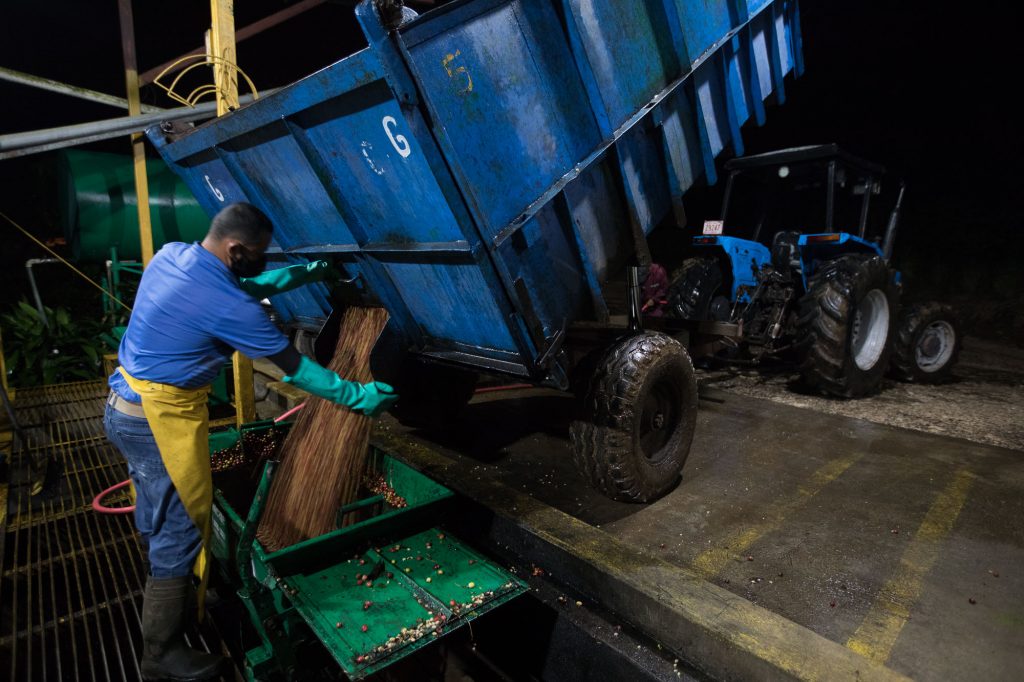
Monica Quesada Cordero/El Colectivo 506/National Geographic Society Covid-19 Emergency Fund
Fanega
Corresponds to 20 cajuelas of harvested coffee cherries. It weighs around 258 Kg (569 pounds) and is the measure that coffee mills use to measure the coffee they buy from producers. One fanega produces 46 kg (100 pounds) of golden coffee.
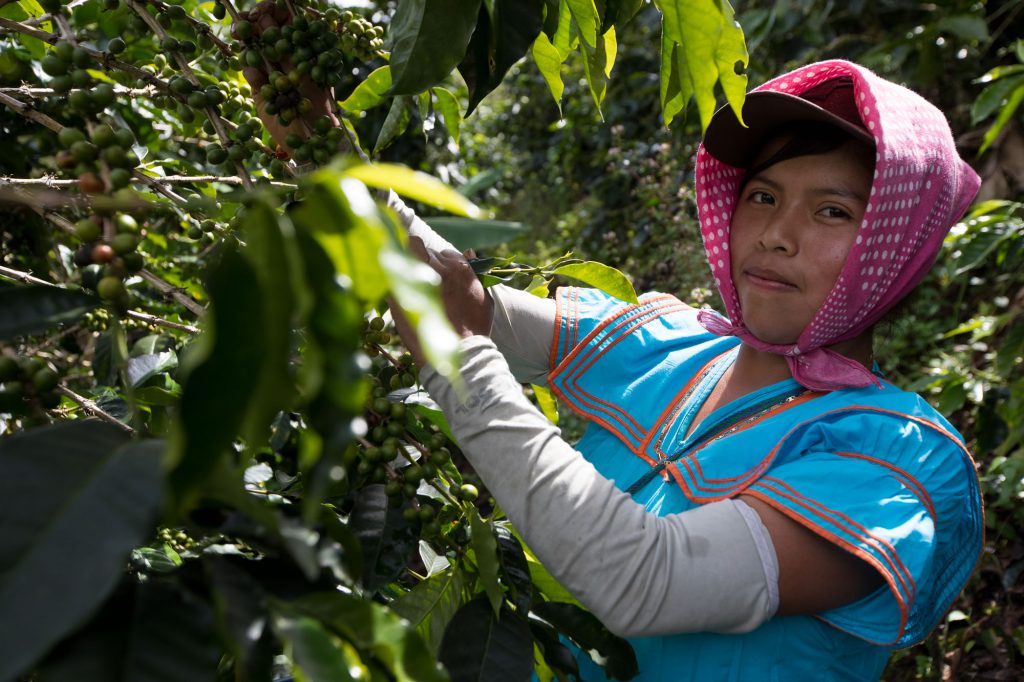
Monica Quesada Cordero/El Colectivo 506/National Geographic Society Covid-19 Emergency Fund
Coffee picker
People who do the manual work of plucking the coffee cherry from the bandola.

Monica Quesada Cordero/El Colectivo 506/National Geographic Society Covid-19 Emergency Fund
Bache or workers’ dormitories
Very basic accommodations within the coffee plantations built for the coffee pickers to live in during the harvest.
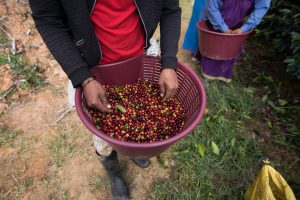
Monica Quesada Cordero/El Colectivo 506/National Geographic Society Covid-19 Emergency Fund
Basket
Coffee pickers tie this basket around their waists to hold the coffee cherries when they are picking them from the bandola. There are many sizes of baskets, but usually, the collector prefers to use a basket that matches the size of the cajuela. Baskets used to be made with natural fibers, but today, to save money, plastic baskets are used, despite the fact that they break more easily.
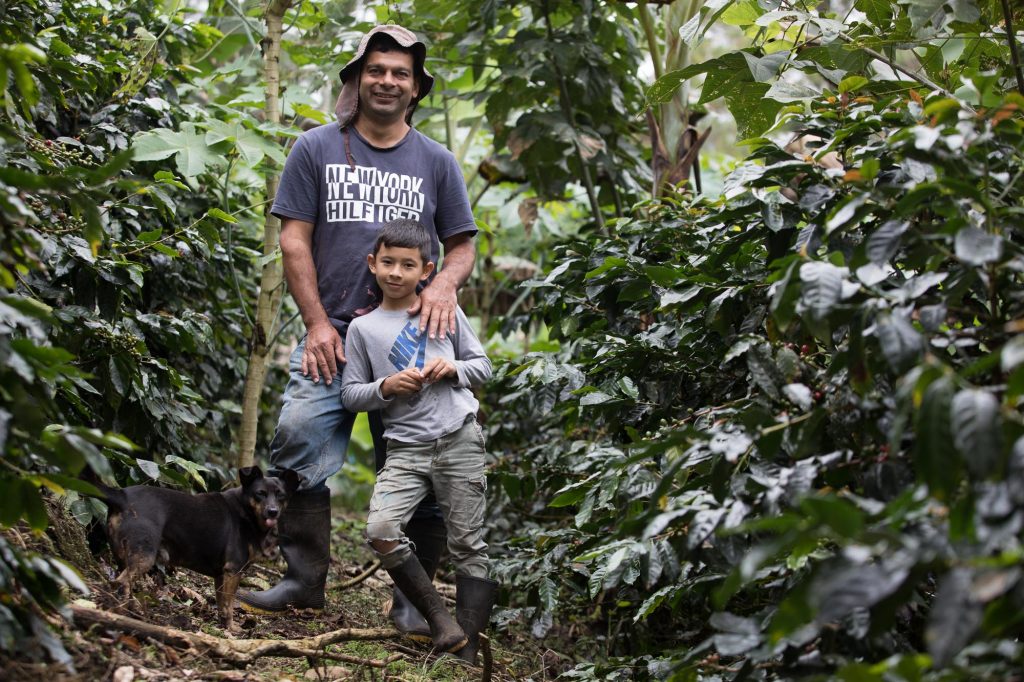
Monica Quesada Cordero/El Colectivo 506/National Geographic Society Covid-19 Emergency Fund
Coffee grower or coffee producer
The farmer who owns a piece of land dedicated to the cultivation and harvest of coffee.
Organic coffee
Coffee production in which agrochemicals are not used to control pests. In many cases, chemicals are not used for soil fertilization, either.
Shade-grown coffee
Coffee plantations in which other plants are planted between the coffee trees that are taller and produce shade for the coffee trees.
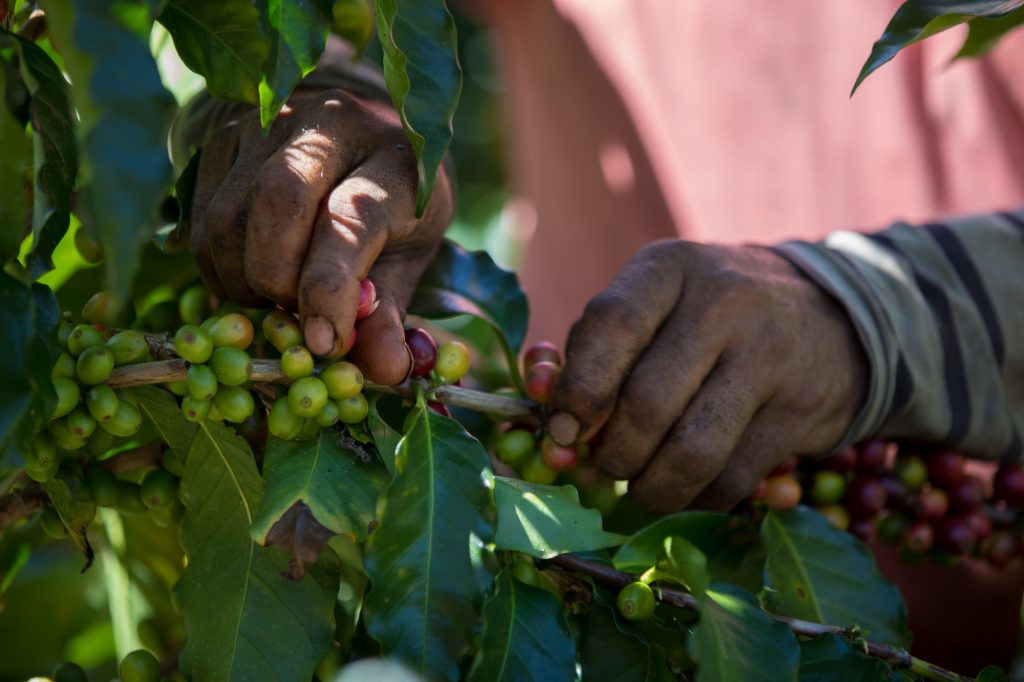
Monica Quesada Cordero/El Colectivo 506/National Geographic Society Covid-19 Emergency Fund
Granea
First picking of coffee cherries in the coffee plantations when only some cherries are ripe and are surrounded by many green and pintón cherries. The granea process is slow and needs the careful work of the collector to remove only the ripe cherries without damaging the green fruits and the bandolas.
Repela
This is the last coffee harvest in the coffee plantations when the coffee plants have few ripe beans remaining in the bandolas, but also all the beans, both ripe and green, must be removed to make room for the next harvest.
Corte
Sections of the coffee plantation that are assigned each day to the groups of coffee pickers harvesting cherries. Usually, “Corte” is shouted in the coffee plantation when someone is looking for a group of pickers that can’t be seen with the naked eye; the group of workers responds to the cry to be located.
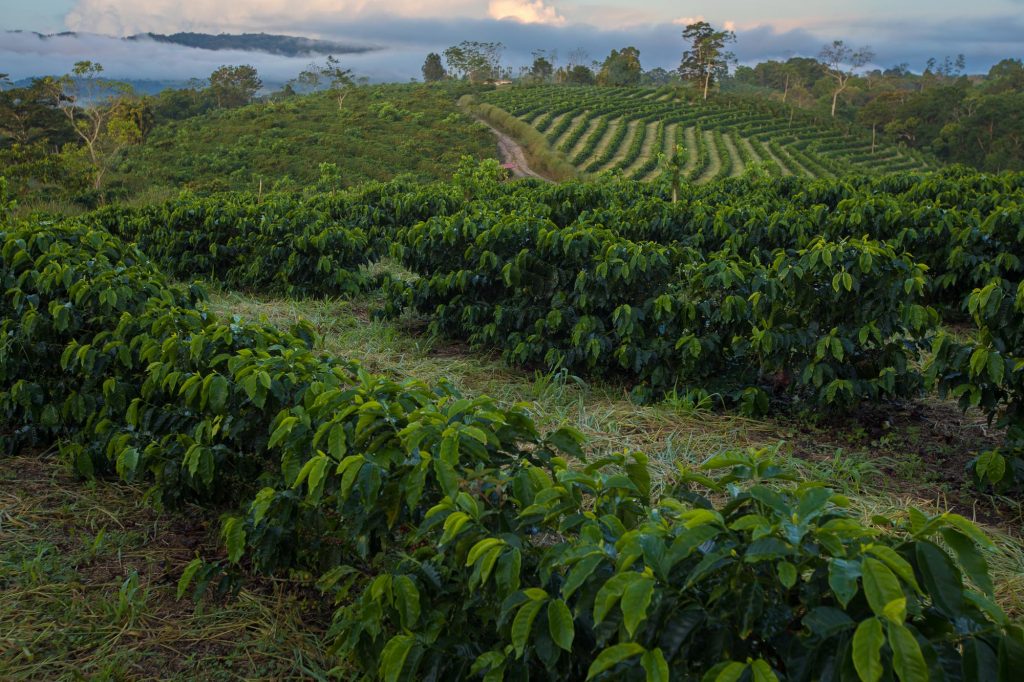
Monica Quesada Cordero/El Colectivo 506/National Geographic Society Covid-19 Emergency Fund
Street (calle)
This is the term way in which coffee trees are planted on the plantations, following lines in which the coffee trees are planted close to each other but with greater distance between each line.
Commander or foreman (capataz, mandador)
The person in charge of a group of coffee pickers and who is responsible for supervising the work that they carry out in every day’s harvest. The foreman assigns the streets to each coffee picker, and then supervises to make sure that they are not mistreating the plants, dumping a lot of unripe coffee on the ground which can promote the growth of diseases, or picking a lot of green coffee.
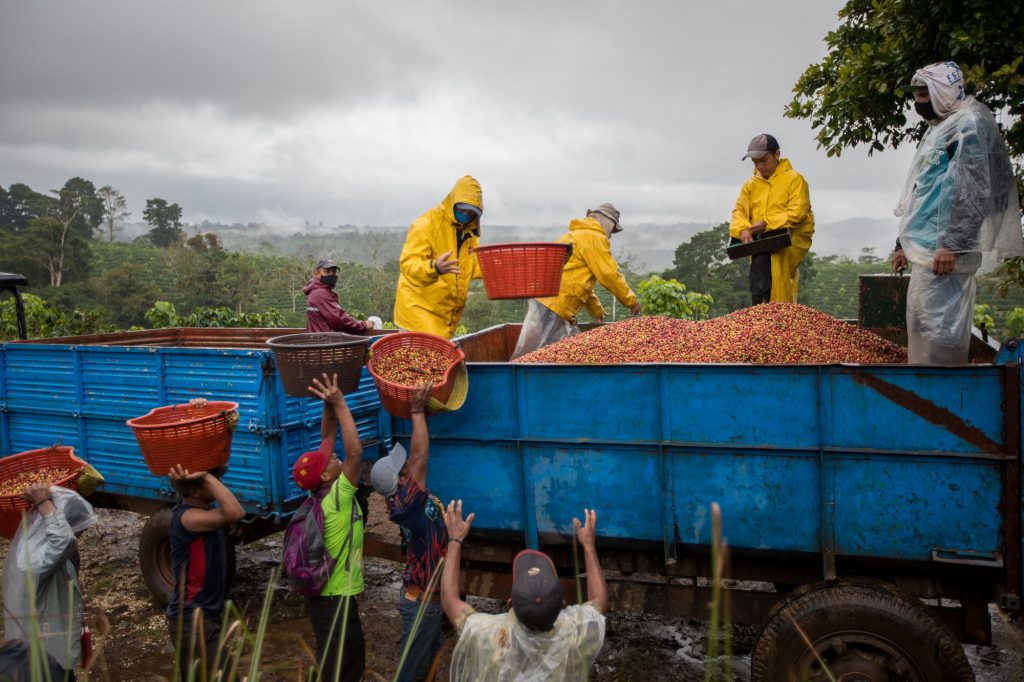
Monica Quesada Cordero/El Colectivo 506/National Geographic Society Covid-19 Emergency Fund
Measurement
At the end of the day of harvesting, the coffee pickers approach a point established near their corte where a cart or truck awaits them to measure all the cajuelas they have collected in the day, and to pay them for each of them.
Millling process
This is the process carried out immediately after the harvest of the coffee cherries, in which the coffee beans are cleaned, pulped, and dried. The milling process can be wet, using water to clean and pulp the fruit, or dry, in which the fruit is left to dry with the pulp, and then it is removed mechanically.
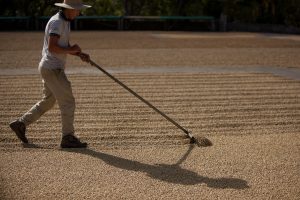
Monica Quesada Cordero/El Colectivo 506
Sun-dried
Drying process of the clean and pulped coffee bean that is done in the sun. Many coffee mills dry the coffee in drying machines. Coffee drying should leave around 10% moisture in the bean so that it can be stored and later roasted without losing its qualities.
Coffee Mill (beneficio)
These are the facilities where the milling processes are carried out and the coffee beans are stored after peeling, classifying, and packing the parchment coffee or green coffee. The mills that perform cleaning processes with water are called wet beneficios. In Costa Rica, the beneficios that only stores dry, parchment-free coffee are known as dry beneficios.
Receiving facilities (recibidores)
Structures where coffee growers carry the daily harvest to be measured in fanegas and delivered to the mill or buyer. The receiver can be located next to a mill or it can be an independent structure placed near large groups of coffee plantations far from the mill, which implies that after measuring the coffee, this harvest must be transported to the mill.
Coffee cooperative
Union of coffee growers to market their product together, with greater volume and control over the market. In addition, like any cooperative, a coffee cooperative works to improve the quality of life of its members through enterprises that benefit them economically and programs that benefit them socially.
Hectare
The hectare is a measure of surface commonly used in Costa Rica that corresponds to 10,000 m2, that is, just over 107,000 square feet.
Manzana
The manzana (also the word for apple) is a measure of surface area commonly used in Costa Rica that originates in Spain with the use of rods. It corresponds to 10,000 square yards, which translates to almost 7,000 m2—that is to say, just over 75,000 square feet.
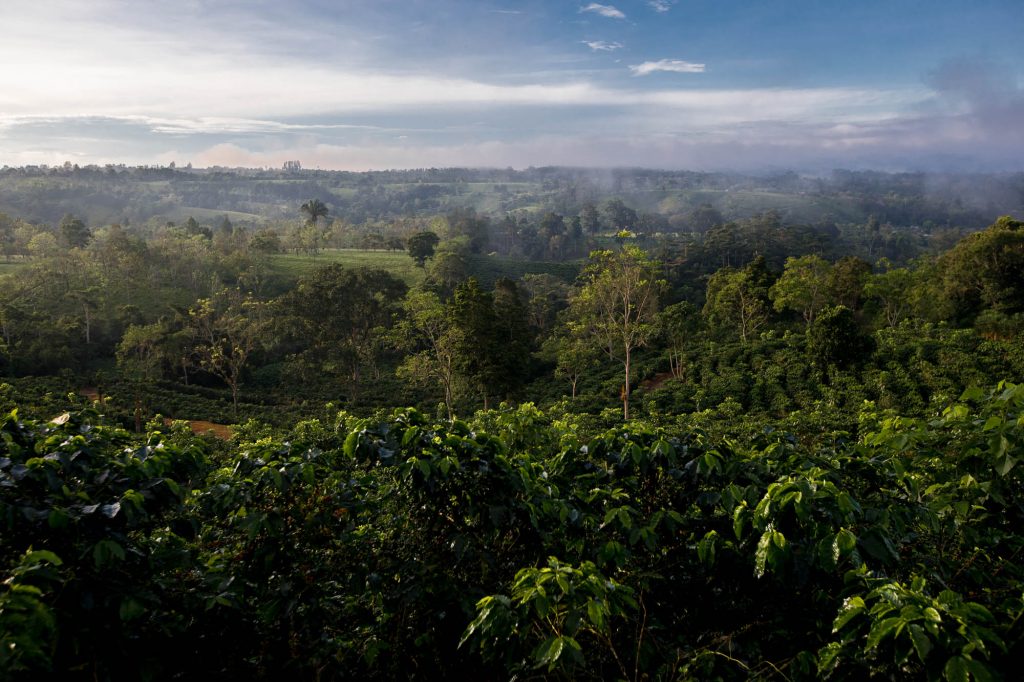
Monica Quesada Cordero/El Colectivo 506/National Geographic Society Covid-19 Emergency Fund


